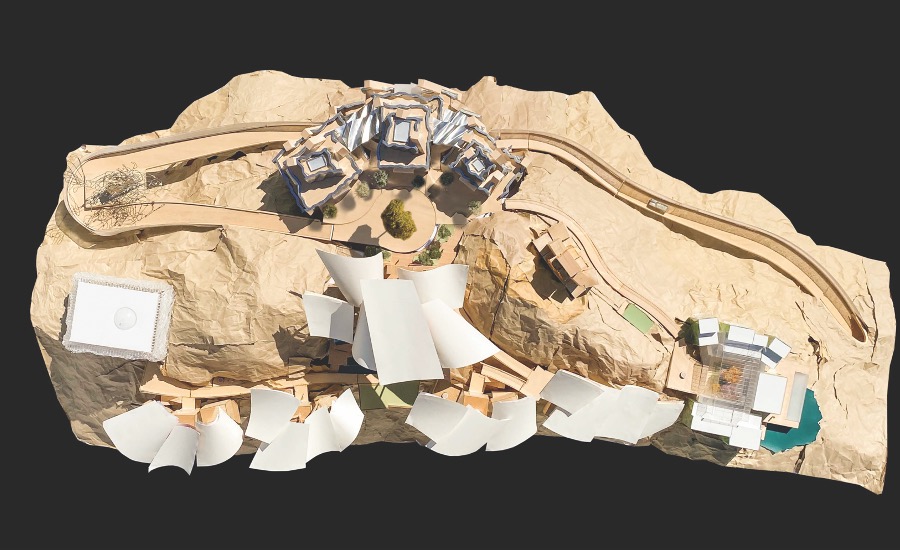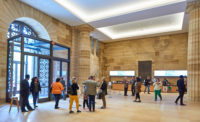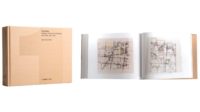Frank Gehry is emerging from the Covid lockdown just like the rest of us, but he is surely busier than most. At 92, he continues to work at every scale—from ongoing plans for the 51-mile-long Los Angeles River basin to creating an art installation based on the Mad Hatter’s tea party, a work that was inspired by his five-year-old granddaughter. While the $1 billion mixed-use Grand complex, across from Disney Hall in Los Angeles, that he designed for the developer Related, is well under construction, much of the architect’s work these days is philanthropic. And projects long in gestation are finally finishing. His restoration and re-imagining of the Philadelphia Museum of Art opens to the public May 7 (a second, final phase has been designed but not yet being built). In the south of France, the Luma Arles tower for the arts will debut in June.
But one typology Gehry rarely designs these days is the private residence—which makes the family compound he is creating in Cabo San Lucas, Mexico surprising, especially given that the commission began with a cold call. On a spectacular site—a high, stony outcropping of land with views of the Pacific on one side and a marina on the other—he has designed a collection of structures for the multi-generational Mansur family. At a total of more than 50,000 square feet, the compound comprises eight individual “junior” suites, built largely of stone and glass, topped by roof top terraces shaded with canopies of steel, which will be colorfully embellished on the underside with art created by Alejandro Gehry, the architect’s son. The common spaces include pavilions for living/dining and formal entertaining, wrapped in linen-finish stainless steel, with piers clad in stone, plus a bar/lounge and a spa.

Image courtesy Gehry Partners
A private family resort, it is hardly modest in scale or engineering—an access road to the site, including a tunnel, is currently under construction. Yet images of the model provided to RECORD suggest that the design is free-spirited—an exuberant, playful cluster of volumes, with rippling canopies, nestled onto rugged terrain. And “play” is a word Gehry likes to use to describe his design process—experimenting, trying different things—so it matters that clients embrace the journey as well as the final architecture.
How did these strangers win over Gehry? According to the architect, he connected to both the site and the clients, who knew and appreciated his work. “It was just the vibe of the family,” he says. Even more important, the relationship grew as the design unfolded over several years. “I love the interaction, that camaraderie, that collaborative spirit,” the architect says of working with the clients. “They’re just great partners; they know how to play with us.”





Post a comment to this article
Report Abusive Comment